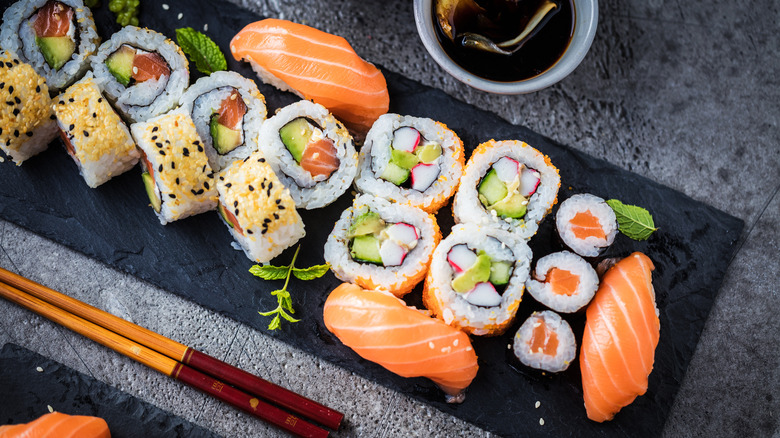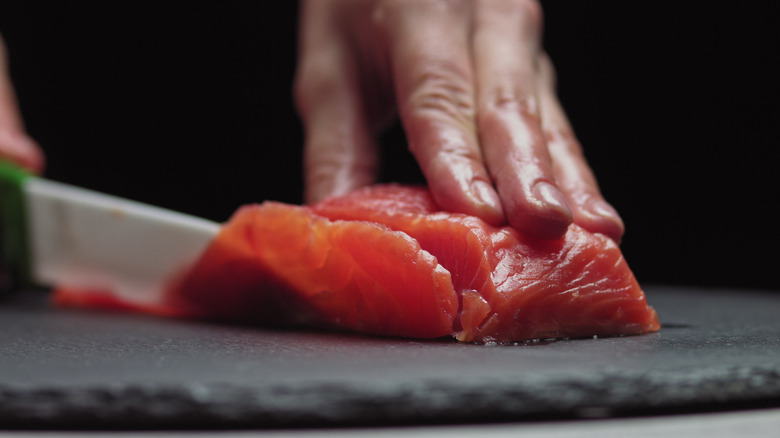Why Your Homemade Sushi Doesn't Taste As Good As From A Restaurant
Any sushi lover with even a modicum of skill in the kitchen has likely had the same thought at some point in their life — "I could definitely make that." Sure, your knife skills may not be as precise as the individuals in the kitchen at your favorite sushi spot, but how hard could it really be? After all, while it may take a bit more effort and skill to create particular creamy sauces or fried components, many of the classic, simple sushi rolls we know and love involve little more than the sushi rice, a few pieces of thinly sliced vegetables or some neatly cut proteins, all packed in a neat little roll.
However, though you can buy the ingredients and try your hand at whipping up a few rolls, your homemade sushi likely just doesn't taste as good as the sushi from your favorite restaurant. Since many of the classic sushi rolls are so incredibly simple, there's really nowhere to hide in a dish like sushi — every single component needs to be perfect, which can be a tall order. The challenges start with what may seem like the most basic component, the rice. Sushi rice is particularly tough to make, because you need to include the perfect blend of rice vinegar, sugar, salt, water, and sushi rice. The grains need to be that signature slightly sticky, chewy texture that goes so perfectly in a roll.
The star of the show is really the fish
Once you have the sushi rice mastered — remember, not an easy feat — you need to turn your attention to the true star of the show, the fish. You might assume that all you need to do is find some high-quality fish and slice it up, but it's not quite that simple. First of all, due to their connections in the industry, sushi chefs have access to a whole different caliber of fish than you do at your regular market, even if you go to an Asian market with an abundance of seafood options for purchase (via RB Sushi). They can find the best of the best, which makes a huge difference in a dish with such minimal components.
This is also key from a health perspective — only some fish are sushi-grade, meaning they can safely be eaten raw (via What Is The Best Rice Cooker). Sushi chefs also know exactly what to do with every type of fish that could possibly grace the interior of a sushi roll. It's not always just about slicing with finesse. Some fish may need to be marinated for a short time in order to truly bring out their best, while others may need to be enhanced with some type of sauce or seasoning. To top it all off, a sushi chef needs to include the exact right proportion of rice, protein, and other fillings or toppings, in order to create a perfect bite.

